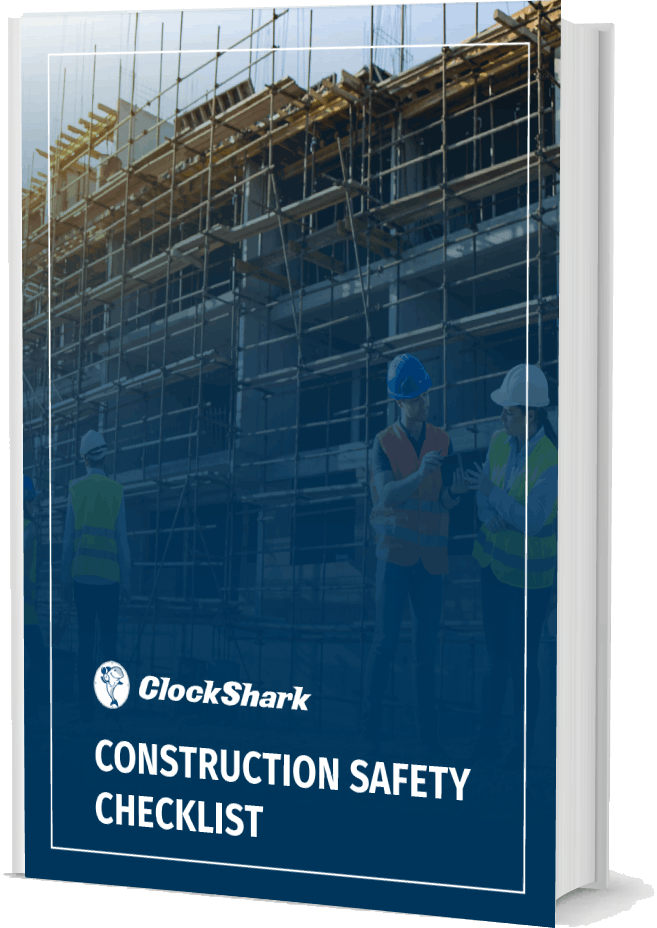Here's a straightforward fix for a lot of your work headaches: getting your crew home safe every day and dodging legal safety issues. It’s easy – just stay on top of OSHA rules! In this blog post, we’ll break down the most dangerous OSHA safety violations in construction and give you practical tips on how to avoid them.
What are OSHA Violations?
An OSHA violation happens when a job site doesn't follow the rules set by the Occupational Safety and Health Administration (OSHA). A safety violation is when safety rules are ignored or broken in the workplace. This could mean not giving workers the right safety gear, not following proper procedures for handling dangerous materials, or not keeping the workplace safe. These violations can lead to injuries, illnesses, or even death, and can result in legal trouble and penalties for employers. What are OSHA violations? They’re breaches in the rules that keep your crew safe and healthy on the job.
The Most Common Types of OSHA Violations in Construction
Construction sites are full of potential hazards. Here’s a list of OSHA violations- some of the most common types of OSHA violations you need to watch out for.
1. Fall Protection
Falls are a top cause of injuries and deaths in construction. OSHA says you need fall protection at heights of six feet or more. This means using guardrails, safety nets, and personal fall arrest systems to keep your crew safe.
How to Prevent It
- Install guardrails: make sure guardrails are set up around all open sides and ends of platforms to prevent accidental falls.
- Use Personal Fall Arrest Systems (PFAS): Equip workers operating at heights with PFAS with a harness, lanyard, and anchor point, to stop falls and minimize risks.
- Regular inspection and maintenance: Conduct routine checks on fall protection equipment to check for damage or wear, quickly repairing or replacing as needed.
2. Scaffolding
Scaffolding accidents can lead to fatal falls. OSHA's standards require that scaffolds be designed, erected, and maintained correctly to prevent these accidents.
How to Prevent It:
- Qualified scaffold personnel: Only assign scaffold building and dismantling tasks to trained and certified personnel to ensure safety and structural integrity.
- Daily and pre-shift inspections: regularly inspect scaffolds before each shift and daily to identify and address any potential hazards.
- Fall protection for elevated scaffolds: Use appropriate fall protection, like guardrails or personal fall arrest systems, on scaffolds over 10 feet high to prevent accidents.
3. Powered Industrial Trucks
Forklifts and other powered industrial trucks are risky if not used correctly. OSHA has rules for maintaining, operating, and training for these vehicles.
How to Prevent It:
- Proper training and certification: Make sure all your crew members handling scaffolds are trained up and certified.
- Regular Gear Check-up: Keep your tools and equipment in top shape by giving them regular once-overs. A bit of maintenance goes a long way in keeping things running smoothly.
- Safe site setup: Set up the job site smartly with clear traffic routes and safe zones. You don’t want anyone tripping over each other or wandering into danger zones.
4. Lockout/Tagout
Lockout/tagout procedures are there to stop machinery from accidentally starting up during maintenance or repairs. Not controlling hazardous energy can cause serious injuries or even death.
How to Prevent It:
- Lockout/Tagout program: Get a solid lockout/tagout program in place. That means having a clear plan for shutting down machinery and locking it out to prevent accidents during maintenance.
- Employee training: Make sure everyone on the team knows the ins and outs of lockout/tagout procedures. You want everyone to be on the same page when it comes to keeping things safe.
- Secure machinery shutdown: Before any maintenance work kicks off, double-check that all machinery is properly shut down and locked out.
5. Personal Protective Equipment (PPE)
PPE is crucial for protecting workers from various hazards. OSHA mandates the use of appropriate PPE for different types of work.
How to Prevent It:
- Hazard assessment for PPE: Before you get started, do a hazard assessment to figure out what kind of PPE your crew needs. You want to make sure they’re suited up for whatever they might face on the job.
- PPE provision and enforcement: Once you’ve sorted out what’s needed, make sure everyone’s actually wearing the gear. Enforce the use of PPE for all workers, no exceptions. Safety first, always.
- Regular PPE check-ups: Keep an eye on your gear. Regularly inspect it and swap out anything that’s seen better days.
6. Machine Guarding
Unguarded machinery can cause serious injuries like amputations, lacerations, and crushing injuries. OSHA requires that machines be equipped with proper guards to protect workers.
How to Prevent It:
- Guard up machinery: Don’t leave anything to chance – slap guards on all the moving parts of your machinery. You want to keep those parts under wraps to prevent any nasty accidents.
- Employee guard training: Make sure your crew knows the drill when it comes to using machine guards. Train them so they know how to work safely around the equipment.
- Guard inspection routine: Keep tabs on those guards. Regularly inspect them to make sure they’re in place and doing their job right.
7. Ladders
Improper use of ladders is a common cause of falls in construction. OSHA has specific requirements for ladder use to prevent accidents.
How to Prevent It:
- Choose the right ladder: Make sure you’re using the right ladder for the task at hand, and always check that it’s in top-notch condition.
- Stable setup: When it’s time to set up your ladder, make sure you’re working on solid ground. Pick stable, level surfaces to avoid any unexpected slips or falls.
- Climb safely: Keep it steady as you climb. Always maintain three points of contact with the ladder – two hands and one foot or two feet and one hand.
8. Hazard Communication
Workers need to know about the hazardous chemicals they might encounter on the job site. OSHA’s Hazard Communication Standard ensures that information about chemical hazards is communicated effectively.
How to Prevent It:
- Chemical inventory control: Keep a tight grip on your hazardous chemicals with an up-to-date inventory. You want to know exactly what’s on hand and where it’s stored at all times.
- Proper chemical labeling: Don’t leave anything to chance—make sure every chemical is clearly labeled. You want your crew to know exactly what they’re dealing with, so there should be no guessing games.
- Safety training and SDS: Equip your crew with the knowledge they need to stay safe around chemicals. Provide Safety Data Sheets (SDS) and train them on hazard communication so they know how to handle any situation that comes their way.
High-Risk Safety Violations That Lead to Fatalities and Serious Injuries
Some types of OSHA violations are particularly dangerous and can lead to severe injuries or fatalities. Here are a few danger zones to watch out for:
Failure to Control Energy Sources
If machines aren’t properly turned off, workers can get hurt by them suddenly starting up or releasing stored energy. That could mean some serious injuries or even death.
Prevention Tips:
- Implement strict lockout/tagout procedures.
- Train workers on the importance and application of these procedures.
- Conduct regular audits to manage safety compliance.
Unsafe Handling of Hazardous Materials
Improper handling of hazardous materials can lead to chemical burns, respiratory issues, and other serious health problems.
Prevention Tips:
- Train workers on safe handling practices and the use of PPE.
- Ensure proper storage and labeling of hazardous materials.
- Conduct regular safety drills and provide first-aid training.
Trench Collapse
Working in trenches comes with big risks, like trench collapses that can be deadly. OSHA has rules in place to stop these accidents from happening.
Prevention Tips:
- Never enter an unprotected trench deeper than five feet.
- Use protective systems like trench boxes or shoring.
- Inspect trenches daily and after weather events.
4 Ways to Prevent Safety Violations on the Job
Keeping your job site compliant with OSHA standards requires a proactive approach to prevent safety violations. Here are four solid strategies to prevent safety slip-ups:
Training Programs for Compliance
Regular training makes sure workers know and stick to safety rules.
Implementation Tips:
- Conduct mandatory safety training for all new hires.
- Provide ongoing training sessions for all employees.
- Use real-life scenarios and hands-on training to enhance learning.
Monitoring Systems for Safety Protocols
Implementing monitoring systems can help make sure safety protocols are followed consistently.
Implementation Tips:
- Use technology like wearable safety devices and cell phone apps to monitor compliance.
- Establish a system for reporting and addressing safety concerns.
- Carry out regular site inspections and audits.
Regular Audits
Regular safety audits help identify potential hazards and areas for improvement.
Implementation Tips:
- Schedule routine safety audits by qualified personnel.
- Use checklists to make sure all areas are covered.
- Act on audit findings fast to address any issues.
Addressing Non-compliance for Violations
Dealing with non-compliance quickly and correctly can stop small issues from turning into big headaches.
Implementation Tips:
- Lay down a clear disciplinary policy for safety slip-ups.
- Give extra training to workers who break safety rules.
- Promote open talk about safety worries to prevent anyone from worrying about getting in trouble.
Our Safety Kit
ClockShark’s Our Safety Kit System launched in New Zealand in 2014 with the aim of enhancing the safety and health of small to medium businesses and schools. It provides a comprehensive, web-based framework accessible from any device.
Key features include:
- Policy Creation: Templates to help draft safety and health policies.
- Risk and Hazard Management: Tools for assessing and mitigating workplace risks.
- Library: A storage area for hazard information and training plans with a search function.
- Emergency Readiness: Guides for creating emergency plans, including contact info and evacuation areas.
- Culture & Engagement: Tools to involve staff in safety practices and track activities.
- Dashboard: A section for recording and detailing incidents and injuries.
A free 30-day trial is available on our website, offering a tour to familiarize new users with the system. Get started with ClockShark today!
Encouraging a Proactive Approach to Safety Training and Compliance
Creating a culture of safety on your job site is essential. Here are some tips for encouraging a proactive approach to safety:
Lead by example: Management should model safe behaviors and show commitment to safety.
Involve workers: Engage workers in safety planning and decision-making.
Reward safe behavior: Recognize and reward employees who follow safety protocols and contribute to a safe work environment.
Continuous improvement: Always look for ways to improve safety practices and stay updated with OSHA regulations.
By sticking to these strategies, you can make your job site safer, cut down on OSHA problems, avoid safety violations, and safeguard your most important asset—your crew. Safety isn’t just about following rules; it's about looking out for your team and making sure they get back home safe every single day.






